Protect Your Home—and Your Life—With These Top-Rated Smoke Detectors
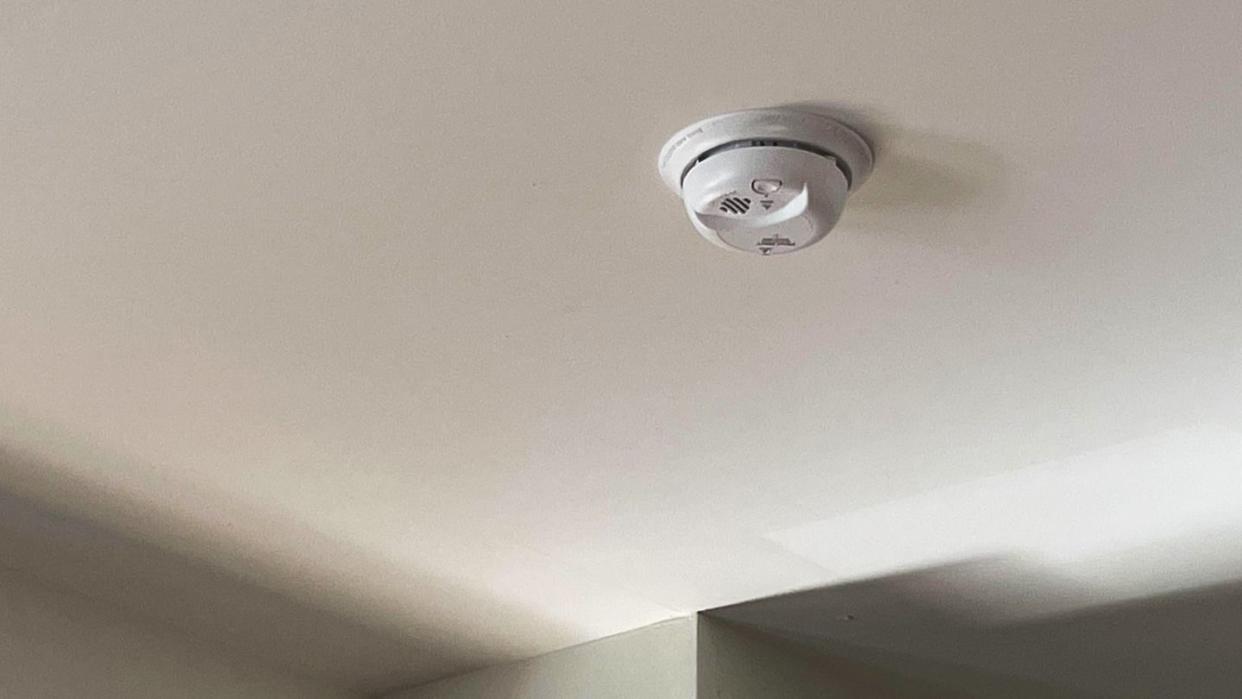
"Hearst Magazines and Yahoo may earn commission or revenue on some items through these links."
Simply said, smoke alarms save lives. When properly installed and working, this invaluable device plays a critical role in protecting you and your family from injuries or death due to a fire. A smoke alarm alerts you to danger to give you the time needed to get out of your home safely.
Unfortunately, smoke detectors are often neglected. According to the National Fire Protection Association (NFPA), among fires in which smoke alarms were present but didn't operate, 46-percent of those alarms had missing or disconnected batteries. It is the recommendation of the NFPA to replace batteries every six months and to test alarms every month.
A good marker for changing out batteries is Daylight Savings Time. Make sure batteries are installed and working and that your alarms are positioned everywhere they need to be.
Shawn Mahoney, technical services engineer for the NFPA, shares that proper smoke alarm placement is essential. Units need to be in every bedroom (guest bedrooms, too), outside of the sleeping areas (like a hallway), and on each level (including the basement regardless of whether it is finished or not) of your home. Check local codes to be sure you are in compliance.
“The best smoke alarm you can have in your home is the one that is installed,” says Mahoney. “You could spend a minimal amount or spend hundreds of dollars on a single smoke alarm, but the most important thing is just having one.”
Once you purchase a smoke alarm, the good news is that you won't need to replace it for about a decade. These devices typically reach their end-of-life at 10 years, and the NFPA recommends replacing them entirely at that time.
Many battery-powered alarms come with lithium-ion batteries that are rated to last for the entire service life of the alarm. Look for the date of manufacture listed on the back of an alarm, which should give you an indication of when it's time to replace it.
Best Smoke Detectors
Battery-Powered Dual-Sensor: First Alert SA3210
Hardwired Dual Sensor: First Alert BRK 3120B
Best With Carbon Monoxide Detector: First Alert SC0501CN-3ST
Good Value: First Alert 9120BFF
A Step Up: Kiddie Smoke Detector
The Expert: Shawn Mahoney P.E. is an Engineer in the Technical Services Division at the National Fire Protection Association (NFPA). He is a registered professional engineer with a B.S. in Mechanical Engineering and a M.S. in Fire Protection Engineering from Worcester Polytechnic Institute.
Prior to joining NFPA, Mahoney held a variety of positions in fire protection engineering, including fire protection consulting and fire protection product design. Currently, he serves as a technical resources to support an assortment of projects across NFPA including Building & Life Safety, Fire Protection Systems, Emergency Response, Electrical, and Industrial & Chemical Engineering.
What to Look for in a Smoke Detector
Ionization, Photoelectric, and Dual-Sensor
There are two types of smoke alarms—single-sensor ionization and single-sensor photoelectric units. They work differently in order to detect smoke. Ionization detectors use a very small amount of radioactive material inside of an ionization chamber with electrically charged plates. When smoke gets into the ionization chamber, it disrupts the flow of ions between the plates and a current can no longer pass through. When that happens, the alarm is activated. Ionization detectors can pick up small particles emitted from fires that burn quickly and produce a lot of flames.
Home, Safe, Home: Best Home Security Systems • Best Outdoor Security Cameras • Best Video Doorbell Cameras
A photoelectric alarm uses a beam of light. When the beam is obstructed by smoke, that causes the alarm to sound. This type of smoke detector is generally more responsive to fires that begin with a long period of smoldering versus a fire where you can see the flames.
Additionally, there are dual-sensor units that combine these two technologies together. For the best protection, the NFPA recommends using both (ionization and photoelectric) technologies in your home. In addition to individual ionization and photoelectric alarms, there are combination alarms that include both technologies in a single device.
Hard-Wired and Battery
Smoke alarms are either hard wired (which may require professional installation) or battery-powered. Hard-wired alarms, though, are required to have battery backup so they still work in case of a power interruption. Battery-powered alarms might use a 10-year sealed battery, 9-volt, AA or AAA batteries.
According to Mahoney, it’s also a smart idea to check local laws for what is required in your home before making a purchase. Different jurisdictions may have different requirements. For instance, he says, you might be required in new construction to have alarms that are hardwired with battery backups. “If we are talking existing buildings, and if there are no local ordinances against it, then you can put in those battery-powered units,” he says.
Interconnected
Several kinds of smoke detectors are interconnectable, so multiple units of the same make and model can be linked, and all alarms will be triggered if there’s a fire in one area of the house.
Carbon Monoxide Detection
Some units do double duty as smoke and carbon monoxide detectors. We recommend a few below. If your smoke detector doesn’t include a carbon monoxide detector, it’s essential to purchase a separate unit to detect the odorless gas, which can leak from household appliances such as gas stoves, ovens, and dryers, as well as other sources, including power generators, furnaces, and water heaters.
UL Certified
Be sure to check that your smoke alarm is UL Certified or third-party tested, says Mahoney. UL Standards & Engagement, the branch of the former Underwriters Laboratories, is scheduled to have new standards that take effect by June 30, 2024. The newest generation of smoke detectors will require all manufacturers to make devices that can distinguish between smoldering fires and cooking smoke. It will mean the newest detectors are equipped with more advanced sensors.
How We Selected These Smoke Detectors
Every smoke detector included below has an average user rating of at least four stars. We cast a wide net in making our selections, digging into our own research and considering additional sources like Wirecutter and Consumer Reports. We feature smoke detectors across a range of price points, starting at about $14 for something basic but effective, to high-end, multi-unit systems that cost over $100. We also include different kinds of smoke detectors as mentioned above, such as single- and dual-sensor models, as well as those that include carbon monoxide detectors.
Battery-Operated Dual-Sensor Smoke Alarm
This dual-sensor (photoelectric and ionization), battery-operated smoke alarm detects both types of fires: fast-burning with high flames in addition to slow-burning, smoldering ones that produce a lot of smoke.
It’s fairly compact with a 5-inch diameter, though its overall design is not as streamlined as that of some other options. That said, safety comes first and this smoke detector ranks high where it counts. It has intelligent sensing technology to distinguish the difference between cooking smoke and other non-threatening situations and real emergencies.
UL-certified, this device features a sealed (non-replaceable) 10-year lithium battery along with an 85-decibel alarm.
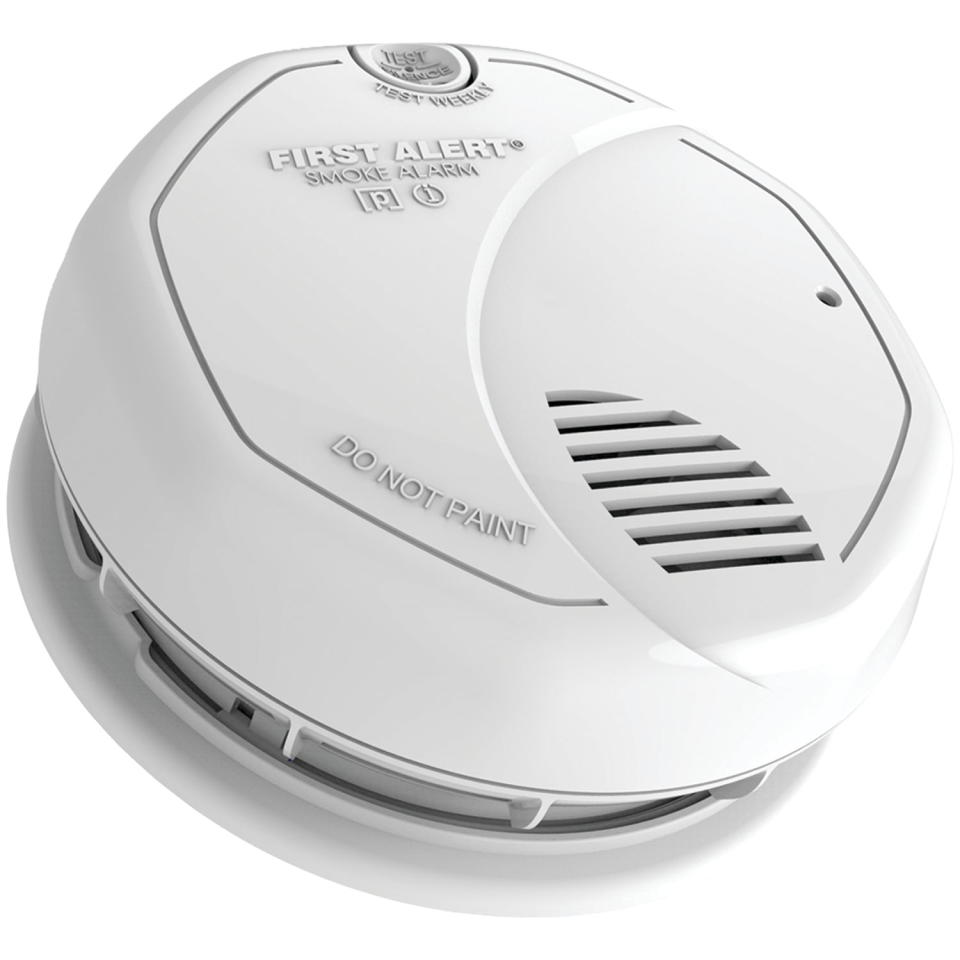
Battery-Operated Dual-Sensor Smoke Alarm
walmart.com
$59.46
Hardwired Dual-Sensor Smoke Alarm
Similar to our Best Overall pick, this model also offers a dual sensor, but it’s hardwired, with battery backup.
With ionization and photoelectric sensors, it covers smoky fires and fast-burning ones that produce a lot of flames. There’s a single button to test and silence the unit, and it’s designed to provide 360-degree access to the sensor, plus it’s UL certified.
The only potential drawback (though likely not a dealbreaker) is that it’s on the large side, at nearly 6-inches wide and a little more than 2-inches thick.
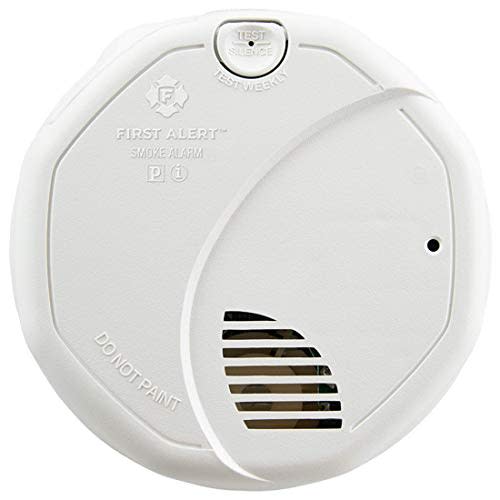
Hardwired Dual-Sensor Smoke Alarm
amazon.com
$37.99
Smoke and Carbon Monoxide Detector
If you’re looking for a smoke alarm that also detects carbon monoxide, this model gets the job done. It’s battery-operated with a photoelectric sensor for slow-burning, smoky fires, and an electrochemical sensor for carbon monoxide.
With this option, to 18 devices can be connected to create a wireless network throughout your home. Its voice location feature has 11 pre-recorded options so it can detect where the fire is coming and signal the other units.
There’s a single test-and-silence button and an easy-to-see indicator on the front shows whether the alarm is sounding for fire or carbon monoxide.
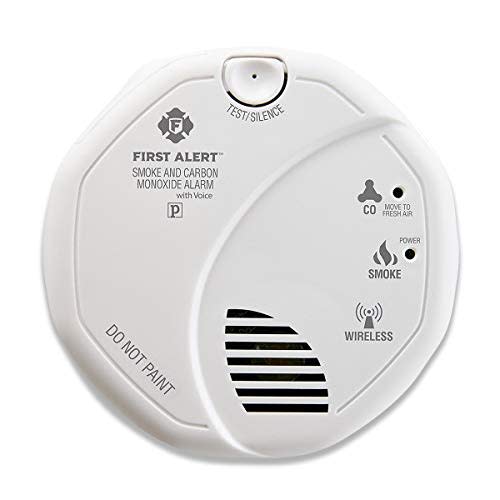
Smoke and Carbon Monoxide Detector
amazon.com
$42.78
Hardwired Smoke Alarm
This smoke detector may have a low price tag, but it offers excellent value and solid features. Hardwired, this smoke detector has an ionization sensor and is interconnectable with up to 18 compatible devices.
There’s a single test-and-silence button, and the backup 9-volt battery (installed on the side of the unit with a tamper-resistant bracket) continues to provide constant monitoring even if there is a power outage.
Additionally, the smoke detector comes with a universal mounting bracket. It’s tested to meet UL standards, and like most smoke detectors, the alarm sounds at a loud 85 decibels.
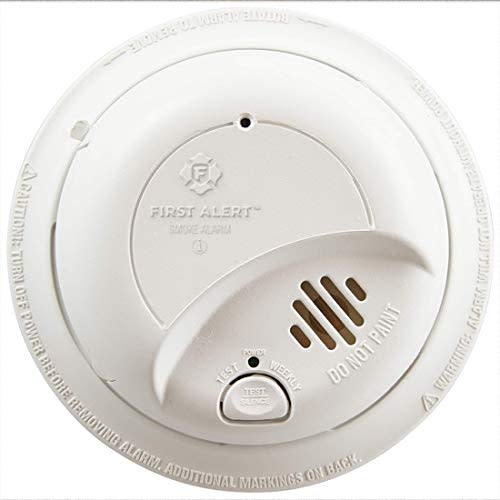
Hardwired Smoke Alarm
amazon.com
$14.36
Lithium Battery Smoke Alarm
Using ionization technology, this smoke alarm from Kidde comes with a sealed-in lithium battery that never needs replacing over its 10-year service life.
It’s compact, low-profile, and streamlined in design. The test and silence buttons are slightly larger than most and are positioned front and center for easy access.
UL-certified, this device comes with a mounting bracket, a limited 10-year warranty, and features an 85-decibel alarm.
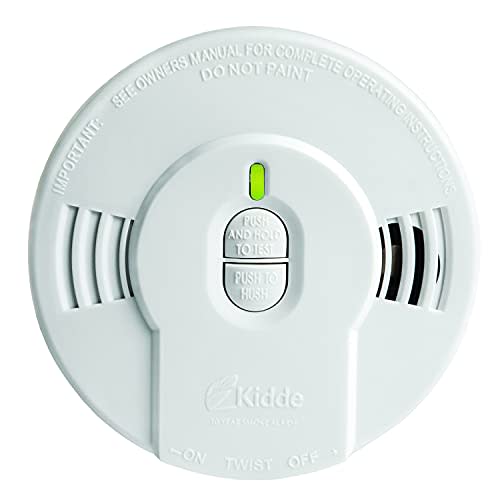
Lithium Battery Smoke Alarm
amazon.com
$18.85
Nest Protect
If you have a Google Home ecosystem, Google’s Nest Protect is the best smart smoke detector to buy. This model has a “split-spectrum” sensor that adds a blue LED to a traditional infrared photoelectric sensor, and the combo is supposed to do a better job of detecting a wider range of particles from fast-burning and smoky fires. Plus, it also detects carbon monoxide.
Through the app, you’ll get phone alerts if there’s a problem in the house, and you can also run tests when you aren’t home, though the device performs battery and sensor checks 400 times a day.
There’s also an optional path light that triggers when you walk underneath it, plus it’s available in a battery-operated or hardwire option.

Nest Protect
amazon.com
$99.00
Slim Smoke Alarm
This battery-powered smoke detector is just over 1-inch thick (about half as thick as a standard smoke alarm), so it’ll be more discrete on your wall or ceiling.
It features a photoelectric sensor, which makes it a smart choice to place near a kitchen, as ionization smoke detectors are more apt to go off if you burn a piece of toast. It features a simple twist-lock mount, a 10-year lithium battery, tamper-resistant design, and an 85-decibel alarm.
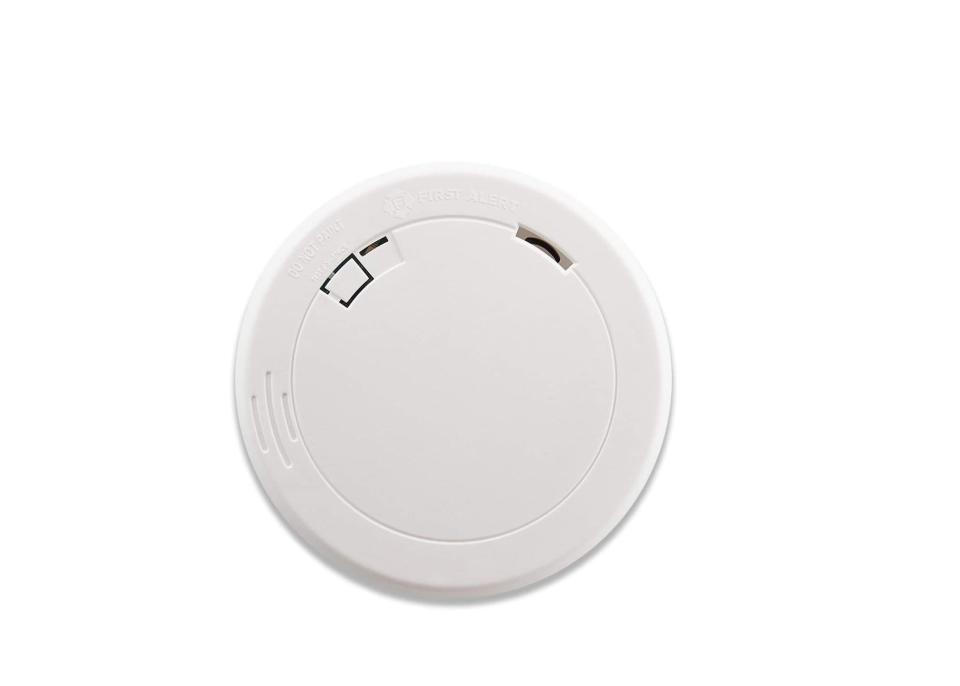
Slim Smoke Alarm
amazon.com
$30.82
Smoke Detector With Voice Alert
Young children have a harder time waking up to an alarm versus a voice, so if you have little ones at home, getting a smoke detector with a voice alert feature is a smart choice.
This photoelectric clam-shell model from Kidde has a large test button in the middle and a slimmer profile than that of some other options. It’s UL-certified, has an 85-decibel alert, and is powered by a 10-year lithium battery in a tamper-resistant compartment that should last for the service life of the detector.
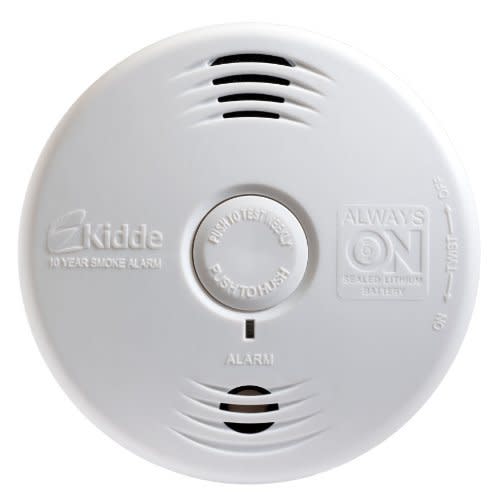
Smoke Detector With Voice Alert
wayfair.com
$59.99
3-Pack Standard Standalone Smoke Detector
Perhaps the best feature of this highly rated smoke alarm is that it’s designed to self-check the battery and critical circuits every 60 seconds—if there’s an issue, it’ll flash and beep.
There’s a three-color LED light indicating the unit’s status, which is bright and easy to see, and the smoke detector also features automatic activation when it’s placed in the mounting bracket.
Housed in upgraded ABS material that is both flame retardant and corrosion resistant, this detector is photoelectric (so best placed away from the kitchen) and UL-certified.
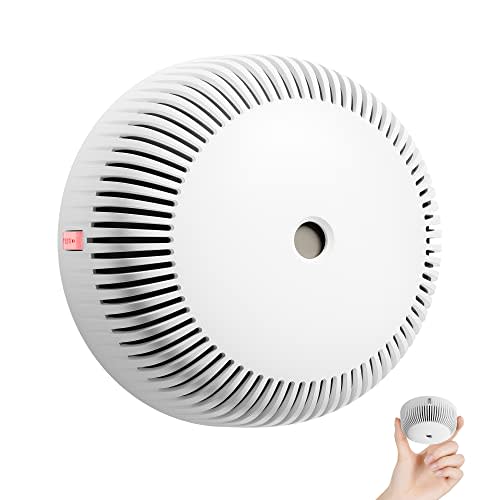
3-Pack Standard Standalone Smoke Detector
amazon.com
$49.99
Outfit Your Home with Smoke Detectors. Expert Shawn Mahoney, of the NFPA, Gives This Guidance Before You Buy.
Is it best for smoke alarms to be connected?
An interconnected smoke alarm ensures that when one alarm goes off, it sends a signal to the rest of the alarms in the house or dwelling unit, and then they will all go off.
Let’s say you had a fire start in your basement and you’re asleep in your bedroom. The smoke alarm in the basement might not be loud enough to wake you, but if that alarm sends a signal to the one in your bedroom, then that one will go off and wake allowing you to get out of the house. NFPA 72 requires that smoke alarms be interconnected, but again, it depends on how your jurisdiction handles those requirements.
In addition to interconnectivity, what other specs are critical?
A carbon monoxide detector might be required in your home. Carbon monoxide detection is typically only going to be required if you have a potential source of carbon monoxide in your home.
Is there a fuel burning appliance like a gas water heater or oil furnace in your home? If so, then you have a source for potential carbon monoxide. Also, you would want one if you have an attached garage. If you have fuel burning appliances in the bedrooms then you need a carbon monoxide detector in each of those bedrooms.
What is one of the biggest mistakes people make when buying a smoke alarm?
They may not buy one that is third-party tested. This is extremely important. NFPA 72 requires that a smoke alarm be listed for that use so a nationally recognized testing lab, which has a specific standard for which they test smoke alarms, certifies that the alarm is working properly.
These labs do mechanical testing, abuse testing, battery testing, and, of course, fire testing. You want to look for a UL or Intertek marking stating and showing that this smoke alarm went to a third-party lab, was tested, and most importantly, passed their standards.
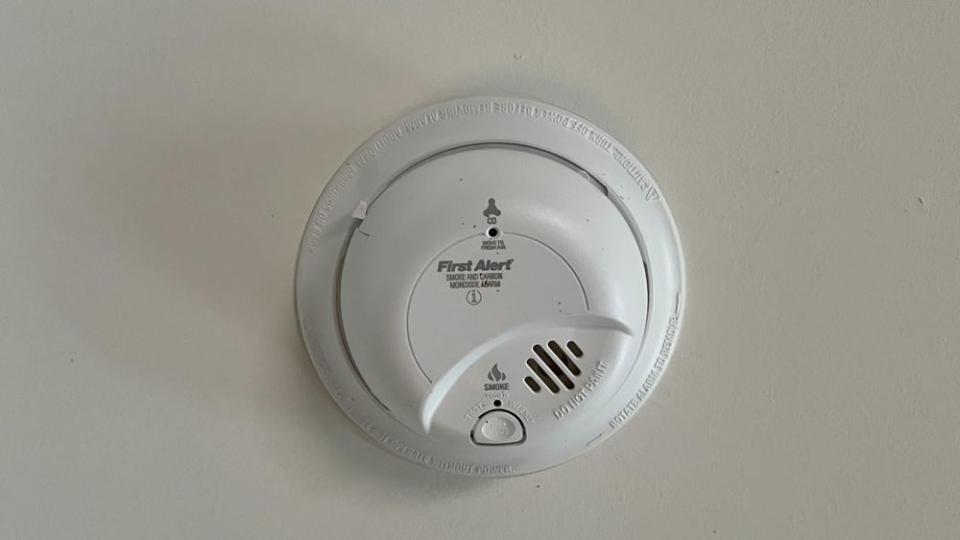
You Might Also Like

